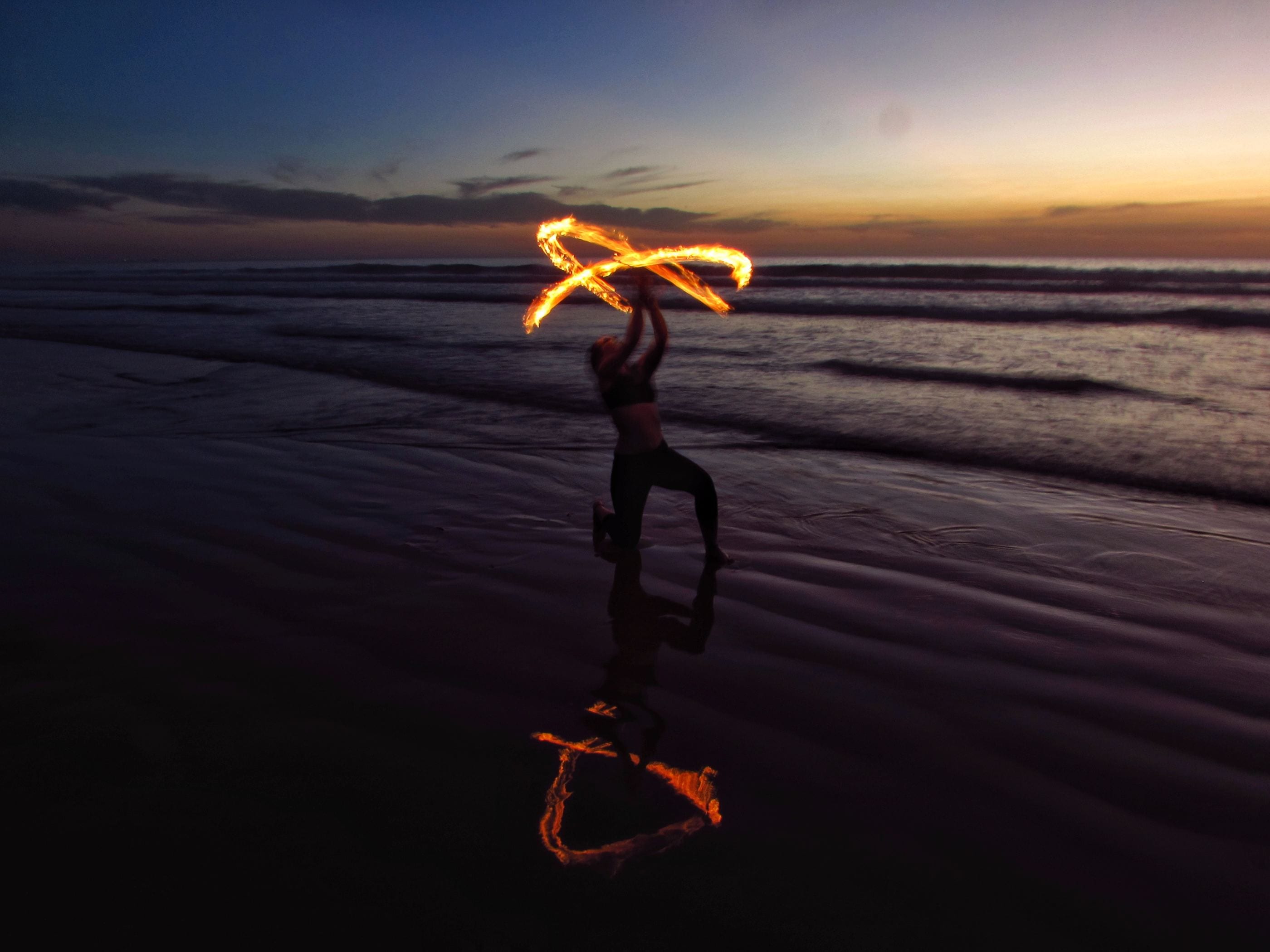
Dr. Jinju Dasalla is a the co-founder of the NaiAsa Institute, where she directs programs for individuals and organizations pioneering new paradigms of healing, education and transformational learning based in scientific, spiritual and somatic principles. She is also the creator of NaiAsana™, an intercultural somatic practice weaving asana, dance, and flow arts, to ultimately awaken universal feminine power and access innate somatic wisdom, both on and off the mat.
Dr. Jinju has appeared at many of our 4-day destination Wanderlust Festivals teaching movement arts.
I remember the first time I sat down to meditate on my plush turquoise carpet. I set a timer on my phone, closed my eyes, and began to breathe in and out of the nose. Between thoughts, my mind would race and my body would fidget. Was my nose really itchy or was I just trying to distract myself? After what felt like an eternity, I gave up, opened my eyes, and realized I had been sitting in a sloppy stillness for a little under two minutes.
I didn’t return back to my makeshift meditation space for years due to what I call meditative shame. In other words, I thought I was a terrible meditator.
Dr. Jinju Dasalla, founder of NaiAsa Institute and SoulFlowArts, knows this dance all too well. “While there are benefits to the old paradigm of meditation, I believe movement and flow are where things are going,” Dr. Jinju shares. In her perception, with so much emphasis on the mind, we miss the connection between the body and movement as a tool for tuning into the innate wisdom and stillness our physical body holds.
Entering The Flow State
After recognizing that meditation is so much more than sitting in stillness, I began to explore other avenues for cultivating a present-state awareness. Attending a yoga class or dancing in the living room became an outlet for me to unite my mind and body. In this space, the notion of being a “bad meditator” dissolved and was replaced with funky grooves and a pure connection to the moment.
Dr. Jinju taps into this integration of mind and body through similar flow arts like poi and hula hooping. “These practices optimize the whole brain and body function by activating opposing patterns of movement; thus, creating new pathways in the brain and body that bring about new ways of BE-ing,” she says.
The benefits of moving meditation allow individuals to access a greater state of flow and joy in their lives while quieting the well-known monkey mind. Much like a seated meditation, through movement, the mind begins to slow down and create space between thoughts, worries, and future stressors.
Alternate Ways To Find Your Zen
Falling prey to misconceptions that meditation is a rigid practice disconnects us from the healing power of its many forms. Whether it be moving with a partner (even if that partner be a hula hoop!) or mindful breathing, Dr. Jinju shares three of her favorite ways to find stillness that don’t require a meditation pillow:
- Breathe. No matter how busy the day, we must breathe. Conscious, slow, deep, breathing is the most vital key to “stilling the mind.”
- Dance. Even for 5 minutes a day. Choose your favorite song, head to the Silent Disco at an upcoming Wanderlust Festival, or grab a hula hoop and get lost in the music and movement of your body.
- Juggle. If you’re looking to spice up your meditation practice, grab a few bean bags or scarves and practice juggling. Through the playfulness of juggling, one study found a reduction of anxiety in participants. We’ll take it!
These practices are a way to bring balance to the mind by incorporating the body and ultimately allow us to center ourselves and feel grounded throughout the busyness of life.
Moving to Mindful
“It’s exciting to see so many people, especially professionals, reclaiming the body as a domain of wisdom, and as a temple to be honored,” Dr. Jinju shares—and we can’t help but agree. The rising emphasis on meditation as a tool for easing stress or calming the nervous system illuminates the necessity for different ways in which we can access the flow state besides sitting in stillness.
If we can find that same flow through the rhythm of our bodies, the allusive meditative state many of us busy hands yearn for becomes an accessible part of our day. Try something new, and approach it as meditation. How will you get moving today?
—
 Ava Johanna Pendl is a wellness writer and teacher based out of Southern California. Between teaching meditation, yoga, and breathwork at events across the globe, Ava focuses on providing readers with online mindfulness practices via her blog and her podcast, The Alchemized Life. Check out her website, Instagram, and podcast.
Ava Johanna Pendl is a wellness writer and teacher based out of Southern California. Between teaching meditation, yoga, and breathwork at events across the globe, Ava focuses on providing readers with online mindfulness practices via her blog and her podcast, The Alchemized Life. Check out her website, Instagram, and podcast.